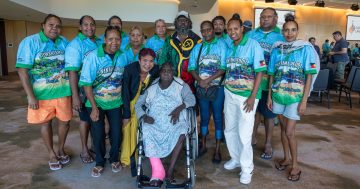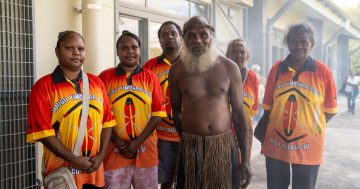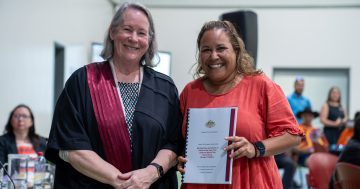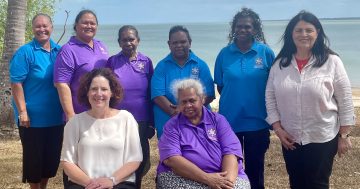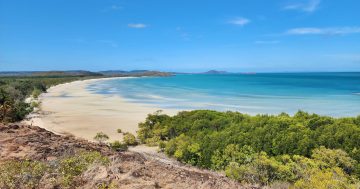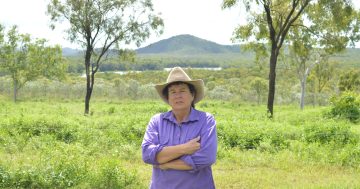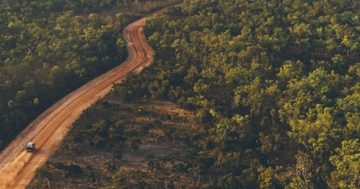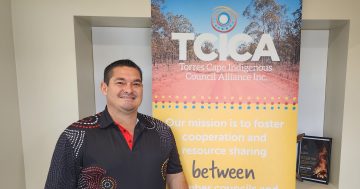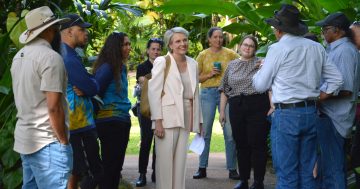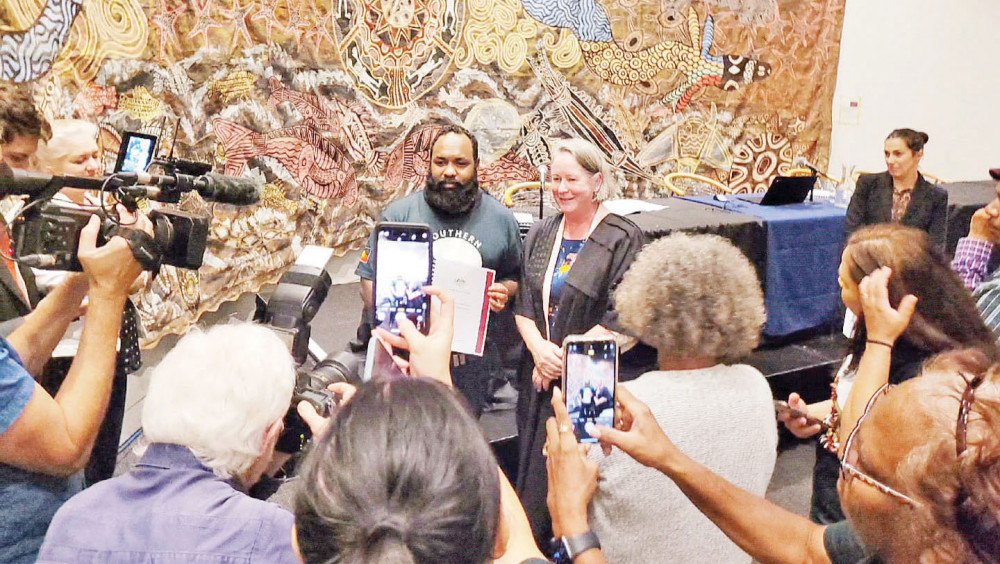
CAPE York Traditional Owners have reconnected with their land, culture and history as part of four historic determinations which saw nearly 1.5 million hectares of land recognised under Native Title.
David Nicholls Jnr, a Southern Kaantju Traditional Owner, said the Federal Court’s determination would hold special meaning after recently finding what happened to his great grandfather, Billy Nicholls, who was a member of the stolen generation.
“It feels like we are taking our great grandfather back now, we are taking him home,” he said.
The Federal Court recognised the Southern Kaantju people’s Native Title rights and interests over 359,921 hectares of land and non-exclusive Native Title rights and interests recognised over about 27,655 hectares of land, which is located north of Coen.
Mr Nicholls said his family couldn’t find out about their great grandfather for almost a century due to a simple spelling error.
“We couldn’t find him because of a typo. He was listed as ‘Nicholld’,” he said.
“We always knew of him, but only officially found him in the past 10 years.”
In her remarks, Justice Debra Mortimer said: “I feel lucky to have learned a little bit about your stories and your Country and it’s a great privilege.
“They took your land and they took your children and we must try to set that right.”
Justice Mortimer urged Traditional Owners to “use European law to help your communities”.
“Despite the terrible history … your law and your culture is strong and is always here to stay.”
Cape York Land Council chair Richie Ah Mat said: “The official word for the handing over of Native Title is a consent determination.
“Determination might be a legal word but it is also a great word in English.
“The Cambridge dictionary describes determination as – to continue to try to do something, although it is very difficult.
“The Traditional Owners know exactly what that feels like.
“It has been very difficult. It has been long, but we have continued to try with persistence, with perseverance and most of all – with determination – because Bama People are very patient and forgiving.
“And we have succeeded.”
The Southern Kaantju determination was one of four held at two special hearings in Cairns last week, with the Northern Kaanju, Ayapathu and Lama Lama people all having their Native Title rights recognised.
Northern Kaanju woman Joanne Nelson said the federal court determination brought on mixed feelings for her people.
“I am happy and sad at the same time,” Ms Nelson said.
“It took many years of hard work. But along the way we have lost many Traditional Elders who can’t be here to see this on the day.
“Knowing that elders can go back on country, knowing that it’s theirs and they will be able to live and work on the country. There is a lot of closure in that.”
The Northern Kaanju were recognised as having exclusive Native Title rights and interests over about 378,057 hectares of land and non-exclusive Native Title rights and interests over about 120,260 hectares of land, located south and west of Lockhart River.
The Lama Lama people had exclusive Native Title rights and interests over about 273,730 hectares of land and non-exclusive Native Title rights and interests over about 52,868 hectares of land in the vicinity of Port Stewart and Princess Charlotte Bay.
Lama Lama Traditional Owner Karen Liddy said the recognition of Native Title would not be happening if it were not for the efforts and determination of her Elders over many years.
“We walked alongside them when we were growing up,” Ms Liddy said.
“Our old people taught us everything about our land and sea Country, either in English or in their languages.
“It was their eyes, their way, their ears, talking on Country that led us to become what we are today. I am proud to walk in their shoes.
“I know they will be there (at the celebrations) in spirit, they will all be there with us.”
The Ayapathu People had exclusive Native Title rights and interests recognised over about 121,398 hectares of land and non-exclusive Native Title rights and interests recognised over about 156,213 hectares of land south of Coen.
Ayapathu Traditional Owner Billy Pratt said the determination was a positive outcome for his people.
“It has taken longer than it should. For the old ones, though, it’s a sigh of relief for them that they can move on to the next phase,” he said.
“It’s another step, in terms of recognition that we are the first people of the land.”
Resources Minister Scott Stewart said Native Title was vital to Queensland’s pathway towards reconciliation by preserving Indigenous culture, values, and traditions.
“Native Title is now recognised in more than 31 per cent of our state,” he said.
“This demonstrates our government’s ongoing commitment to working alongside Indigenous Queenslanders to recognise their native title rights.”
Aboriginal and Torres Strait Islander Partnerships Minister Craig Crawford said the landmark decision came after a long journey to win back land justice.
“We need to acknowledge that this moment is a shining light in what is a deep, dark, history of dispossession of Aboriginal and Torres Strait Islander people in this state,” he said.
“Every move we make to right the wrongs of the past, such as acknowledging the Native Title rights, we take a positive step on the path to truth-telling, healing and true reconciliation.”
Member for Cook Cynthia Lui said these were important milestones for Cape York’s Traditional Owners.
“These determinations reflect people’s connection and care for the land across many generations and with many more to come,” the MP said.
“I’m proud to be part of a government that works alongside First Nations people who continue to hold deep connection to country after more than 60,000 years.”


